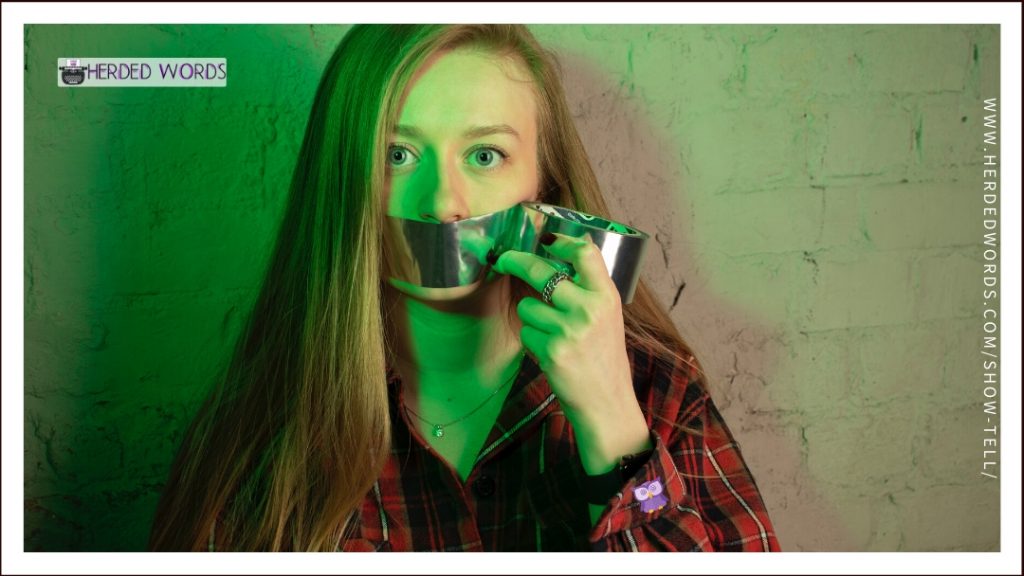
Herdedwords.com uses affiliate links. This means we receive a commission on the sale of certain items. This is at NO additional cost to you. Visit the policies page to learn more.
Showing vs telling are simple aspects of writing that are difficult to master.
Books are places that readers go to experience something. They’re not just a recap of events, they’re adventures, romances, experiences!
Table of Contents
The Difference Between Showing vs Telling
Don’t tell me the moon is shining. Show me the glint of light on broken glass
– Anton Chekhov
Telling is usually brief and factual. It’s an efficient way to provide information. It usually gives a broad overview and avoids providing a lot of detail. Telling rarely (if ever) evokes emotion in people.
Showing is elaborate and rich in detail. It’s an inefficient way to provide information because of the detail required. Showing often evokes emotions.
All Show and No Tell? No!
You can’t only show. And you can’t only tell. You need a balance between the two. Some show and some tell.
Tips for Showing More
Limit Sensory Words, Use Description Instead
You have five senses – sight, smell, sound, taste, and touch. Try to limit your use of sensory verbs like see, smell, hear, felt, etc.
Tell it: I heard her leave.
Show it: She slammed the door so hard the windows rattled.
Tell it: It made her feel uneasy.
Show it: Goosebumps prickled down her skin as she searched for the words to reply.
Limit Emotion Words, Use Description Instead
When was the last time you thought to yourself or said to someone else, “I feel angry.” Probably doesn’t happen often (if at all). How do you know you’re angry? How does someone else know you’re angry? By your actions.
Limit emotion words when describing feelings and instead include more descriptions.
Tell it: “I feel angry.”
Show it: I picked up the lamp and threw it at him.
Tell it: She looked happy.
Show it: It was almost clown-like the way her smile never left her face.
Describe (More) Body Language
Your reader doesn’t need (or want) everything spelled out to them. Treat them like a real person and make them observe behavior (like body language) and draw their own conclusions.
Here are two articles about body language. Use these strategies in your writing!
- How to Read Body Language – Revealing the Secrets Behind Common Nonverbal Cues by Fremont College
- The Ultimate Guide to Body Language by Psychology Today
Tell it: She looked bored by our conversation.
Show it: She looked anywhere but at me.
Tell it: He sat down and relaxed.
Show it: He sat down, splayed his legs wide, and began absently flicking through his phone.
Examples of Show & Tell from Bestselling & Award-Winning Fiction
VENDETTA IN DEATH

VENDETTA IN DEATH, published in 2019, is a romantic suspense novel by JD Robb. It is book 49 in the In Death series. JD Robb is a pseudonym for Nora Roberts.
VENDETTA IN DEATH spent 1 week at #1 on the NYT Bestseller List. Between 2009 and 2018, Nora Roberts spent a total of 29 weeks at #1 on the NYT Bestseller list (16 weeks as Nora Roberts + 13 weeks as JD Robb).
Showing & Telling Examination
Let’s start with a passage from chapter one. First, we’ll highlight the portions that represent showing.
With Peabody she started toward the entrance of a nicely rehabbed brownstone of about fifteen floors of dignity. No night man on the door, Eve noted, but good, solid security.
– Chapter 1
She badged her way through the beat droid on the door.
The lobby continued the dignity with navy and cream tiles for the floor, navy walls with cream trim, a discreet security desk—currently unmanned—a couple of curved padded benches, and fresh, springy-looking flowers in tall, slim vases.
Eve called for an elevator while she filled in Peabody.
The passage is a good mix of showing and telling – but what if it wasn’t?
If we rewrote this passage to be mostly telling, it would read something like this:
With Peabody she started toward the entrance of a 15-floor brownstone. The security was solid.
She showed her badge to the officer on the door. The lobby decor was dignified.
Eve called for an elevator while she filled in Peabody.
If we rewrote this passage to be mostly showing, it would read something like this:
Eve and Peabody moved on steady legs toward the entrance of a nicely rehabbed brownstone of about fifteen floors of dignity. No night man on the door, Eve noted, but she counted seven cameras recording their progress and assumed they were connected to a responsive local security company.
She flashed her badge at the beat droid on the door without slowing her pace.
The lobby continued the dignity with navy and cream tiles for the floor, navy walls with cream trim, a discreet security desk—currently unmanned—a couple of curved padded benches, and fresh, springy-looking flowers in tall, slim vases.
Eve pressed the call button for an elevator then turned to Peabody.
It should be obvious that the passage that’s mostly telling is too boring for fiction. When using telling, it should be short phrases and sentences to break up your showing.
Let’s check out another passage from Chapter 2. Again, we’ll start by highlighting the parts that are showing.
But the buzzer sounded, the locks clicked open.
– Chapter 2
The tiny hallway held a skinny elevator Eve wouldn’t have trusted if Po had lived a mile up, and an equally skinny set of stairs.
As they climbed up, she heard the door open above. “You sounded pretty kick-ass, Carrie, but—”
The man in the doorway broke off.
Another passage that is neither all show or all tell – but what if it wasn’t?
If we rewrote this passage to be mostly telling, it would read something like this:
The door unlocked. The elevator looked unsafe so they took the stairs.
As they climbed up, she heard the door open above. “You sounded pretty kick-ass, Carrie, but—”
The man in the doorway broke off.
If we rewrote this passage to be mostly showing, it would read something like this:
But the buzzer sounded, the locks clicked open.
The tiny hallway held a skinny elevator Eve wouldn’t have trusted if Po had lived a mile up, and an equally skinny set of stairs.
As they climbed up, she heard locks click and a door creak from above. “You sounded pretty kick-ass, Carrie, but—”
The man in the doorways eyes widened and while his mouth continued to move no further sound emerged.
The differences between the 2 rewrites and the original are a lot smaller in this example. I hope you’re seeing that you don’t need to be doing all show and no tell.
Let’s check another bestseller.
THE WRONG SIDE OF GOODBYE
THE WRONG SIDE OF GOODBYE, published in 2016, is a mystery, thriller, & suspense novel by Michael Connelly. It’s book 19 in the Harry Bosch series.
THE WRONG SIDE OF GOODBYE spent 2 weeks at #1 on the NYT Bestseller List. Between 2009 and 2018, Michael Connelly spent a total of 12 weeks at #1 on the NYT Bestseller list.
Let’s start with a passage from chapter one. First, we’ll highlight the portions that represent showing.
For most of the past year Bosch had been in the middle of a protracted lawsuit against the department where he had worked for more than thirty years. He sued because he believed he had been illegally forced into retirement. The case had drawn ill will toward Bosch from within the ranks. It did not seem to matter that during his time with a badge he had brought more than a hundred murderers to justice. The lawsuit was settled but the hostility continued from some quarters of the department, mostly the quarter at the top.
– Chapter 1
This is an excellent example of good use of telling. THE WRONG SIDE OF GOODBYE is part of a lengthy series. The author cannot show everything that happened in prior books (because that was done already in those books), but readers need to be aware of some things that happened. A brief section of telling is appropriate for that purpose.
Let’s check out another passage from Chapter 2. Again, we’ll start by highlight the parts that are showing.
He had to turn on the Cherokee’s engine to lower the window. Bosch knew what this was about. A twenty-two-year-old vehicle in need of paint parked outside the estate of a family that helped build the state of California constituted a suspicious activity. It didn’t matter that the car was freshly cleaned or that he was wearing a crisp suit and tie rescued from a plastic storage bag. It had taken less than fifteen minutes for the police to respond to his intrusion into the neighborhood.
This passage is basically all showing. But what if it wasn’t?
If we rewrote this passage to be mostly telling, it would read something like this:
The police arrived quickly. This was a rich neighborhood and Bosch did not appear to belong. He lowered the car window.
Michael Connelly is an author that clearly knows when to use a lot telling and when to use a lot of showing. Both these examples were well written and provided all necessary information.
Let’s see how a couple of recent award-winning novels show and tell.

THE SYMPATHIZER
THE SYMPATHIZER, published in 2015, is a historical fiction novel by Viet Thanh Nguyen.
THE SYMPATHIZER won the 2016 Pulitzer Prize for Fiction.
Let’s start with a passage from chapter one. First, we’ll highlight the portions that represent showing.
I tossed away my cigarette. You’re not dead yet. You should get back to your posts.
– Chapter 1
The first marine focused once more on my face, taking a step closer until his nose nearly touched mine. What are you?
You are out of line, Lieutenant! Bon shouted.
I’ll tell you what you are. The marine poked his finger in my chest.
Don’t say it, I said.
A bastard! he cried. The two other marines laughed and chimed in. A bastard!
I drew my revolver and placed the muzzle between the marine’s eyes. Behind him, his friends fingered their rifles nervously but did no more. They were impaired, but not enough to think they could be faster on the draw than my more sober friends.
Another passage that is neither all show or all tell – but what if it wasn’t?
If we rewrote this passage to be mostly telling, it would read something like this:
I tossed away my cigarette. You’re not dead yet. You should get back to your posts.
The first marine stepped up to my face. What are you?
You are out of line, Lieutenant! Bon shouted.
I’ll tell you what you are. The marine poked his finger in my chest.
Don’t say it, I said.
A bastard! he cried. The two other marines laughed and chimed in. A bastard!
I pointed my revolver at him. Behind him, his friends looked nervous. They were impaired, but not enough to think they could be faster on the draw than my more sober friends.
If we rewrote this passage to have a lot more showing, it would read something like this:
I flicked my cigarette towards a pile of trash on the side of the road. You’re not dead yet. You should get back to your posts.
The first marine focused once more on my face, taking a step closer until his nose nearly touched mine. What are you?
You are out of line, Lieutenant! Bon raised his voice and took a step towards him.
I’ll tell you what you are. The marine jabbed his finger in my chest like a bullet.
Don’t say it, I said.
A bastard! he cried. The two other marines laughed and chimed in. A bastard!
I reached quickly for my revolver and placed the muzzle between the marine’s eyes. Behind him, his friends stepped back half a step fingered their rifles but did no more. They were impaired, but not enough to think they could be faster on the draw than my more sober friends.
It’s sometimes difficult to see the show vs tell in dialogue.
Let’s now check out a passage from chapter two. First, we’ll highlight the portions that represent showing.
We lit cigarettes and turned our attention to the dark sky, every now and again illuminated by a parachute flare sputtering into spermatic existence, its bright head of light trailing a long, wiggling tail of smoke as it drifted downward.
Ready for a confession? Bon said. He used words the way he used bullets, in short, controlled bursts. I knew today was coming. Just never said so aloud. That’s denial, right?
I nodded and said, You’re only guilty of the same thing that everyone else in Saigon is. We all knew and we couldn’t do a thing about it, or so we thought, anyway. But anything can always happen. That’s what hope is all about.
He shrugged, contemplating the end of his burning cigarette. Hope’s thin, he said. Despair’s thick. Like blood. He pointed to the scar in the palm of the hand holding the cigarette, carved to follow the lifeline’s arc. Remember?
This passage is heavy on the showing. But what if it wasn’t?
If we rewrote this passage to be mostly telling, it would read something like this:
We lit cigarettes and watched the sky.
“Ready for a confession?” Bon said, “I knew today was coming. Just never said so aloud. That’s denial right?”
I nodded and said, “We all felt that way. That’s hope.”
He shrugged.
The original dialogue was very descriptive. If we pare it down to just telling what’s going on, it loses a lot of the nuance.
Let’s look at one more award-winning novel.
THE STONE SKY
THE STONE SKY, published in 2017, is a science fantasy novel by N. K. Jemisin. It’s book 3 in the Broken Earth trilogy.
THE STONE SKY won the 2018 Hugo Award. All three books in the trilogy won Hugo Awards.
Let’s start with a passage from chapter one. First, we’ll highlight the portions that represent showing.
The job you want to do, though? Find Nassun, your daughter. Take her back from the man who murdered your son and dragged her halfway across the world in the middle of the apocalypse.
– Chapter 1: you, in waking and dreaming
About that: I have good news, and bad news. But we’ll get to Jija presently.
You’re not really in a coma. You are a key component of a complex system, the whole of which has just experienced a massive, poorly controlled start-up flux and emergency shutoff with insufficient cooldown time, expressing itself as arcanochemical phase-state resistance and mutagenic feedback. You need time to … reboot.
This means you’re not unconscious. It’s more like periods of half-waking and half-sleeping, if that makes sense. You’re aware of things, somewhat. The bobbing of movement, occasional jostling. Someone puts food and water into your mouth. Fortunately you have the presence of mind to chew and swallow, because the end of the world on the ash-strewn road is a bad time and place to need a feeding tube. Hands pull on your clothing and something girds your hips—a diaper. Bad time and place for that, too, but someone’s willing to tend you this way, and you don’t mind. You barely notice. You feel no hunger or thirst before they give you sustenance; your evacuations bring no particular relief. Life endures. It doesn’t need to do so enthusiastically.
Another passage that is neither all show or all tell, but a mix of the two.
If we rewrote this passage to be mostly telling, it would read something like this:
The job you want is to get your daughter, Nassum, back from the man who took her and murdered your son.
About that: You’re not really in a coma, you’re part of a complex system and you need to … reboot.
This means you’re neither unconscious nor conscious. Someone changes your diapers and feeds you.
Let’s continue with a passage from chapter two. First, we’ll highlight the portions that represent showing.
“It’s angry,” Nida continues calmly, though now she faces away from both Steel and Nassun. “Yet even now it may be willing to compromise, to forgive. It demands justice, but—”
– Chapter 2: Nassun feels like busting loose
“It has had its justice a thousand times over,” says Steel. “I owe it no more.” Then he opens his mouth wide.
Nassun turns away, again. On a morning when she has rent her father to pieces, some things remain too obscene for her child’s eyes. At least Nida does not move again once Steel has dropped her body to the ground.
“We cannot remain here,” Schaffa says. When Nassun swallows hard and focuses on him, she sees that he stands over Umber’s corpse, holding something small and sharp in one gore-flecked hand. He gazes at this object with the same detached coldness that he turns upon those he means to kill. “Others will come.”
Through the clarity of near-death adrenaline, Nassun knows that he means other contaminated Guardians—and not half-contaminated ones like Schaffa himself, who have somehow managed to retain some measure of free will. Nassun swallows and nods, feeling calmer now that no one is actively trying to kill her anymore. “Wh-what about the other kids?”
This passage is almost entirely showing.
If we rewrote this passage to be mostly telling, it would read something like this:
“It’s angry,” Nida continues.
“I owe it no more,” says Steel before he dies.
Nassun turns away, again.
“We cannot remain here,” Schaffa says. Nassume sees him standing over Umber’s corpse. “Others will come.”
Nassun swallows and nods, feeling calmer. “Wh-what about the other kids?”
Showing adds nuance, emotion, and description to story worlds. It’s an essential element but that doesn’t mean it’s always the right choice.
As you can see from the examples above, some telling is necessary. Practice mixing your showing and telling so that readers get the most out of your story world.

Show & Tell Writing Practice
It’s time to put what you’ve learned into practice. Do the following exercises and start mastering showing AND telling!
Exercise: Analyze & ReWrite Novels
I’ve pulled 4 more passages from the modern bestselling and award-winning fiction examples. Read the passages and identify the areas of showing and the areas of telling.
Rewrite each passage twice:
1) Write the entire passage using only showing.
2) Write the entire passage using only telling.
Read the three passages (the original and your two rewrites). Which do you prefer? Why?
Passage 1: VENDETTA IN DEATH by JD Robb
He swiped into the elevator. “I don’t really know where they are now, but Sylvia might.”
– Chapter 3
“Okay.”
The ride up was smooth, as one expected of a Roarke property, and since she added her own swipe to Po’s, they went express.
The doors opened into the small, tasteful lobby of Perfect Placement.
Rich brown chairs in the waiting area contrasted richly with pale gold walls. The company logo arched on the wall behind reception where a man and woman, both in black, manned the echoing curved counter.
“Good morning, Lance.” The female offered a smile as she tapped her earpiece. “Hey, Westley, nice to see you.”
“Ah, is Sylvia in?”
“Isn’t she always?” The woman’s smile faltered as she skimmed her gaze over Eve and Peabody. “Is something wrong?”
“We need to speak with her,” Eve said.
“We’ll go straight back, okay?”
Without waiting, Po turned toward the glass doors. They whispered open even as the receptionist said, “I’ll let her know.”
Cubes first, Eve noted, with worker bees already at it, and the smell of street coffee and economy pastries rising through the air.
Around a corner to a handful of offices, some open, some closed. Another corner, bigger offices, snazzier views, the sound of keyboarding, of ’link calls.
Po paused outside of one of the snazzies.
An athletically built woman with strong shoulders sat behind a desk working a keyboard with a blur of fingers. She didn’t look up from the work.
Passage 2: THE WRONG SIDE OF GOODBYE by Michael Connelly
Vance leaned back in his chair and looked off into the past.
– Chapter 3
“I wanted to study film when I was a young man,” he said. “The dreams of youth…”
He didn’t finish his thought. Bosch realized he would have to give the money back. This was all some kind of derangement, and there was no job. He could not take payment from this man even if it was only an infinitesimal drop from Vance’s bucket. Bosch didn’t take money from damaged people, no matter how rich they were.
Vance broke away from his stare into the abyss of memory and looked at Bosch. He nodded, seeming to know Harry’s thoughts, then gripped the armrest of his chair with his left hand and leaned forward.
“I guess I need to tell you what this is about,” he said.
Bosch nodded.
“That would be good, yes.”
Vance nodded back and offered the lopsided smile again. He looked down for a moment and then back up at Bosch, his eyes deeply set and shiny behind rimless glasses.
“A long time ago I made a mistake,” he said. “I never corrected it, I never looked back. I now want to find out if I had a child. A child I could give my gold pen to.”
Bosch stared at him for a long moment, hoping he might continue. But when he did he seemed to have picked up another string of memory.
Passage 3: THE SYMPATHIZER by Viet Thanh Nguyen
The real injustice, I said, beginning to get heated, is that an honest man must live a penurious life in our country. Therefore, please allow me to extend to you a small token of the appreciation of my patron for the favor that he is requesting. You do have enough visas on hand for ninety-two people, do you not?
– Chapter 3
I was not certain he would, in which case my plan was to put down a deposit and promise to return with the remainder. But when the sub-undersecretary replied affirmatively, I produced the envelope of remaining cash, $4,000, enough for two visas if he was feeling generous.
The sub-undersecretary unsealed the envelope and ran his thumb, callused by experience, over the sheaf of bills. He knew immediately how much money was in the envelope—not enough! He slapped the cheek of the coffee table with the white glove of the envelope, and as if that were an insufficient expression of his outrage he slapped the cheek again. How dare you attempt to bribe me, sir!
Passage 4: THE STONE SKY by NK Jemisin
Tonkee shakes her head, an expression on her face that might be sympathy, or maybe it’s just rueful acknowledgment of how pathetic you sound. “Well, at least you know it’s a bad idea. But if you’re that determined, then you’d better get started now.” She turns away. Can’t really blame her, can you? Venture into the almost certainly deadly unknown with a woman who’s destroyed multiple communities, or stay with a comm that at least theoretically will soon have a home again? That’s barely even a question.
– Chapter 3: you, imbalanced
But you should really know better than to try to predict what Tonkee will do. She sighs, after you subside and sit back on the rock you’ve been using for a chair. “I can probably wrangle some extra supplies out of the quartermaster, if I tell them I need to go scout something for the Innovators. They’re used to me doing that. But I’m not sure I can convince them to give me enough for two.”
It’s a surprise to realize how grateful you are, for her—hmm. Loyalty isn’t the word for it. Attachment? Maybe. Maybe it’s just that you’ve been her research subject for all this time already, so of course she’s not going to let you slip away when she’s followed you across decades and half the Stillness.
But then you frown. “Two? Not three?” You thought things were working out with her and Hjarka.
Exercise: Analyze More Novels
Every genre will be a little different. Choose some of your favorite novels and some novels in the genre you want to write in (if they’re different). Analyze a few random sections from each novel.
- Highlight the sections that are clearly showing.
- Rewrite the passage so it’s mostly telling.
- Rewrite the passage so it’s mostly showing.
Exercise: Adapt LITTLE RED
Now that you understand and have practiced showing and telling, it’s time to rewrite LITTE RED-CAP.
Your task: Rewrite RED so it has a nice balance of showing and telling.
Prompt:
Mannequins have been banned and all stores now use live-in models. You just got hired as one.
Your task: Write a scene of at least 500 words then analyze your use of showing & telling.
Remember: Show AND Tell
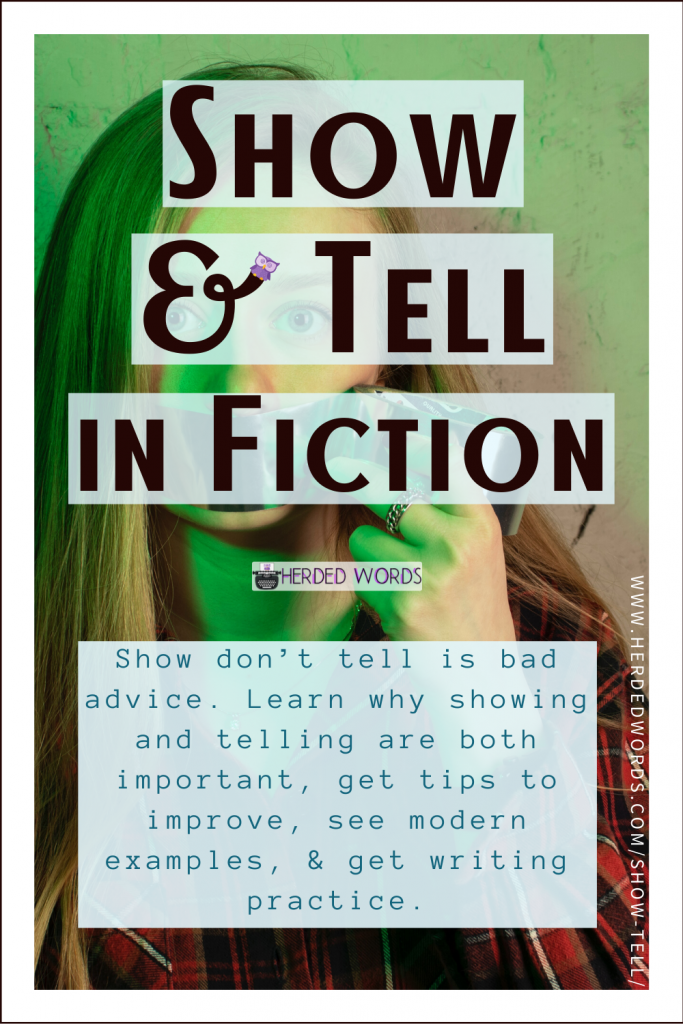
Show don’t tell is oversimplified advice. Your novel is going to contain both showing and telling.
Remember to balance the showing with some telling.
Once you’ve mastered show & tell, it’s time to consider how you represent women. Check out How to Write Women in Fiction next.
Like this post? Please PIN IT and follow me on social media. Thanks!
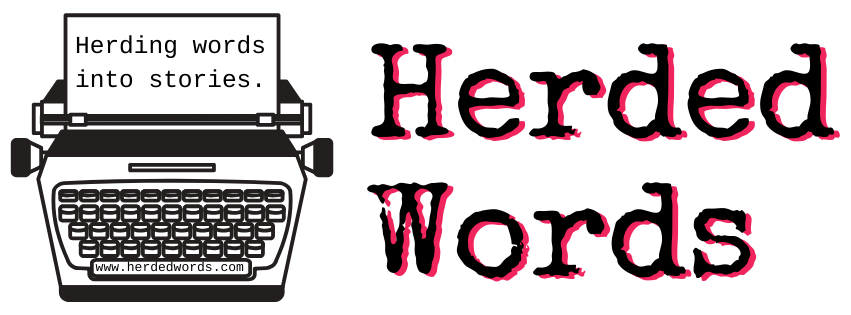

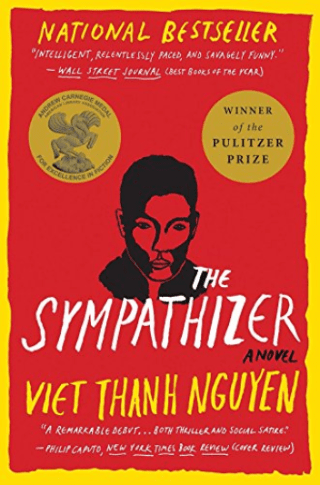


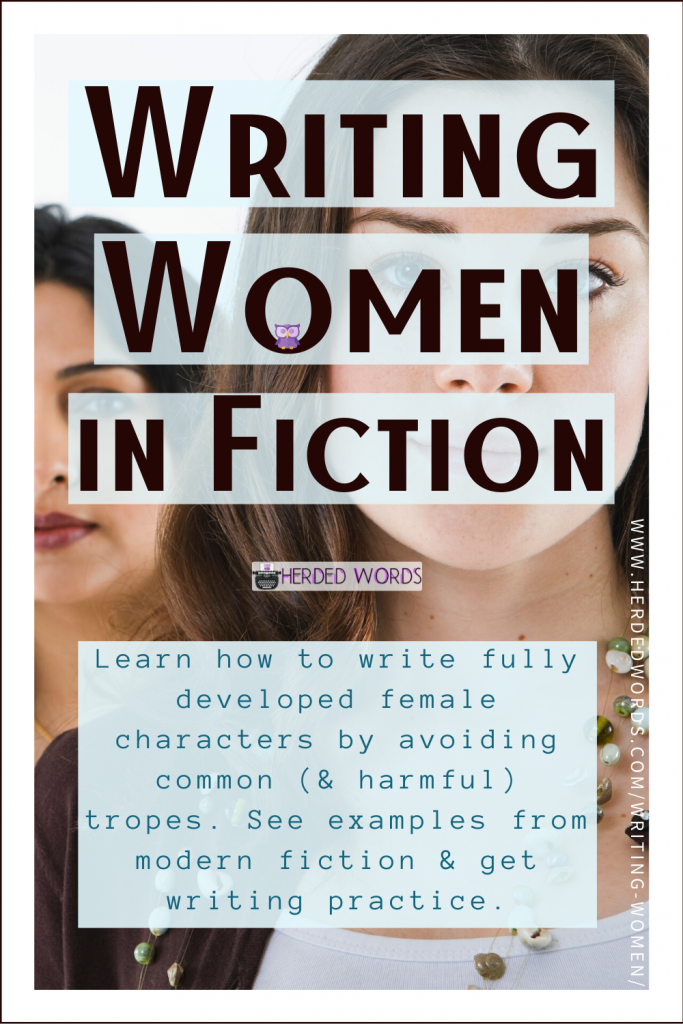






this is my first time coming here and i really love this post. it was soo good, all your words are very very very very very good